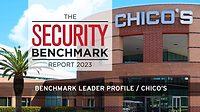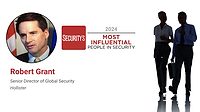Materion is a global materials provider found across a number of industries, including transportation, technology, finance and critical infrastructure. Materion serves 61 countries with 36 locations worldwide.
Highlighting the organization’s security is Monica Mellas, Vice President of Global Security at Materion. Mellas is responsible for the physical security program, including anti-money laundering and crisis management.
“The best way to explain it is, if you fly on an airplane, you’re flying with Materion products. If you’re using an electronic device, like your phone, your computer, your tablet, we have components that go into that product as well. If you’re driving a car, it’s likely that one of our products are found in it. If you still carry cash on you, you’re carrying some of our technology, which is a product that goes on that paper currency to support anti-counterfeiting efforts,” Mellas says.
Because of Materion’s role in the supply chain, the company had no choice but to remain operational through the COVID-19 pandemic. To ensure the health and safety of everyone who had to continue working in person, security teams redirected hallway traffic and spaced out workstations to meet guidelines set by the Center for Disease Control (CDC). A concern Materion faced was balancing existing security measures with pandemic-induced restrictions.
“Several of our facilities have biometric access control or different access control devices. At that time, people were concerned about not knowing who used the reader before them. We had to get creative to make sure that we didn’t reduce our security levels, but we were able to modify and accommodate health concerns,” Mellas says.

Mellas states that the pandemic was a wake-up call, and not solely for the health and safety aspect. The supply chain interruptions experienced during the early months of the pandemic continued even after businesses reopened.
“Obviously, the COVID-19 protocols dropped, but what it did was help us focus on our different levels of response to types of crises, and then how those crises could relate into our business,” Mellas says. “We realized that we needed to make a better effort at closing the gaps. If even our most prepared locations may not have thought of a crises that could occur. I think what we have started to work on is the level of support we provide to all facilities within our organization. How do we make sure that if these disasters happen, our locations are aware and prepared for these issues?”
One of the ways Materion worked to improve crisis management was through mass notification.
“If there’s a snow storm that’s happening and we don’t want our employees to drive because the governor shutdown roads, we can send a mass notification to the employees affected. If there’s a situation that requires us to close a facility, we can send out those focused communications to our teams. If there’s an event that takes place on location we can ask people if they’re OK and if they need help,” Mellas says.
Materion also has an official crisis management program. If an incident is announced, it’s dispatched to emergency response teams to handle the event.
Mellas also touches on interpersonal crisis management, including workplace violence.
“We saw a significant increase in the potential for a workplace violence situation occurring, whether it’s been threats or implied threats that we needed to act on. It required some form of intervention,” Mellas says. Materion partnered with another organization for workplace violence prevention training. The A.L.I.C.E. (Alert, Lockdown, Inform, Counter and Evacuate) program outlines the different responses to a violent intruder event.
“Last year, Materion trained 2,300 U.S.-based employees, which was our best turnout yet, and at the end of this year, we’ll be expanding the program into our APAC region. Other thing that we’ve done, which is a great enhancement to our program, is implementing risk assessment teams. A lot of times, we were making decisions on how to act based in a silo or closed-room type of approach where we may not have the critical information that we needed.”
In working to keep employees safe, Mellas emphasizes the importance of building a strong security culture.
“If we don’t have a security-minded culture within our organization, then we really go back into a silo where security can’t be everywhere. So we have this group and the importance of us communicating our message, why we’re here, how we help, whether it’s in town halls, at our facilities, or if it’s on our social media campaigns. We want to make sure that people understand just how valuable they are to the success of our overall security program,” Mellas says.
When looking to the future, Mellas predicts a shift towards increased mobility and access. “We’re going see more accessible things from our smartphones or mobile devices. But we have to be careful, because the more you rely on technology, the more you have to plan for when that technology isn’t available. If the system is down and your login doesn’t work, there still needs to be a way to access important information,” Mellas says. Any new development in technology also leads to an analysis on the technology’s benefits and risks. As Materion learned when biometrics posed safety risks during the pandemic, there always needs to be a backup when new technology is integrated into an organization.







